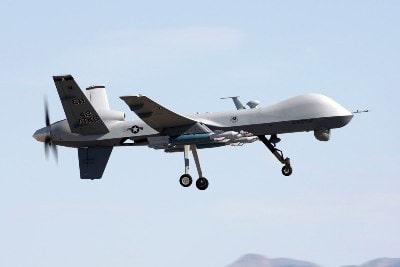Military Drone Technology and Innovations

Military drone technology and innovations have revolutionized the way wars are fought in the modern era. The development of drones has enabled the military to carry out reconnaissance, surveillance, and precision strikes with greater efficiency and effectiveness. With advancements in technology, drones are becoming more sophisticated, making them a valuable asset for modern warfare. This article will explore the evolution of military drone technology and innovations, the different types of military drones, their applications, and their impact on modern warfare.
Evolution of Military Drone Technology and Innovations
The concept of drones was first introduced during World War I, when the US Army developed unmanned aerial vehicles (UAVs) that were used to train anti-aircraft gunners. However, it was not until the 1960s that drones were developed for reconnaissance purposes. The first drone to be used in combat was the Israeli-developed Scout, which was used during the 1973 Yom Kippur War.
The 1990s saw a significant increase in the use of drones in military operations, with the introduction of the Predator drone by the US military. The Predator drone was primarily used for surveillance, but it was soon modified to carry missiles and used for targeted strikes.
Since then, the development of drone technology has accelerated, and drones have become smaller, more agile, and more sophisticated. The use of drones has become widespread in modern warfare, and they are now used for a wide range of military applications.
Types of Military Drones
Military drones can be classified into four categories: surveillance drones, combat drones, target drones, and stealth drones.
Surveillance Drones: These drones are used for reconnaissance and surveillance purposes. They are equipped with cameras, sensors, and other surveillance equipment that allow them to gather information on enemy movements and activities.
Combat Drones: These drones are designed for offensive operations and are equipped with weapons such as missiles, bombs, and machine guns. Combat drones are used to carry out targeted strikes on enemy targets.
Target Drones: These drones are used for target practice and weapons testing. They are designed to mimic the flight patterns and characteristics of enemy aircraft, allowing military personnel to train and test their weapons systems.
Stealth Drones: These drones are designed to be invisible to radar and other detection systems. They are used for reconnaissance and surveillance purposes and can be equipped with cameras, sensors, and other surveillance equipment.
Applications of Military Drones
Military drones have a wide range of applications, and they are used for various purposes, including reconnaissance, surveillance, precision strikes, and target practice.
Reconnaissance and Surveillance: Drones are used for reconnaissance and surveillance purposes, providing military personnel with real-time information on enemy movements and activities. This information is crucial in planning military operations and preventing surprise attacks.
Precision Strikes: Drones equipped with missiles and bombs are used for targeted strikes on enemy targets. These strikes are highly accurate and minimize the risk of collateral damage.
Target Practice: Target drones are used for target practice and weapons testing. They provide military personnel with a realistic target to practice their weapons systems on.
Impact of Military Drones on Modern Warfare
The use of military drones has had a significant impact on modern warfare. Drones have revolutionized the way wars are fought, providing military personnel with a tactical advantage and minimizing the risk of casualties.
One of the most significant advantages of drones is their ability to carry out targeted strikes on enemy targets with a high degree of accuracy. This minimizes the risk of collateral damage and civilian casualties, making it easier for military personnel to achieve their objectives without incurring the wrath of the local population.
Drones also provide military personnel with real-time information on enemy movements and activities, allowing them to plan their operations more effectively. This information is crucial in preventing surprise attacks and gaining a tactical advantage on the battlefield.
Another advantage of military drones is their ability to operate in hostile environments. Drones can operate in areas that are too dangerous for human personnel, such as areas with high levels of radiation, chemical or biological hazards, or areas with anti-aircraft defenses. This makes them a valuable asset in modern warfare, as they can gather intelligence and carry out strikes in areas where human personnel would be at risk.
Drones also have a psychological impact on the enemy. The use of drones creates a sense of fear and uncertainty among the enemy, as they never know when or where they will be attacked. This psychological impact can be just as effective as the physical impact of drone strikes, as it can disrupt the enemy’s morale and create confusion among their ranks.
Despite the advantages of military drones, there are also concerns about their use. One of the main concerns is the risk of civilian casualties. While drones are highly accurate, there is always a risk of collateral damage, particularly in urban areas where civilians are often in close proximity to enemy targets. Another concern is the potential for drones to be hacked or intercepted by the enemy, which could result in sensitive information being compromised or the drones being used against friendly forces. Military drone technology and innovations have revolutionized the way wars are fought in the modern era. The development of drones has enabled the military to carry out reconnaissance, surveillance, and precision strikes with greater efficiency and effectiveness. With advancements in technology, drones are becoming more sophisticated, making them a valuable asset for modern warfare. Military drones have a wide range of applications and have had a significant impact on modern warfare. While there are concerns about their use, it is clear that drones will continue to play an important role in future military operations.